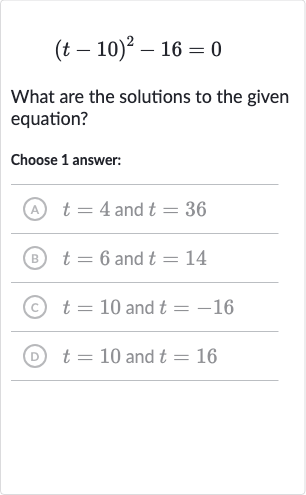Full solution
Q. What are the solutions to the given equation?Choose answer:(A) and (B) and (C) and (D) and
- Recognize the equation form: Recognize that the equation is in the form of a difference of squares, which can be factored as .The equation can be rewritten as .
- Factor using difference of squares: Factor the equation using the difference of squares formula.
- Solve for t: Set each factor equal to zero and solve for t. or or
- Check solutions: Check the solutions to ensure they satisfy the original equation.For : For : Both solutions satisfy the original equation.
More problems from Compare linear and exponential growth
QuestionGet tutor help
QuestionGet tutor help
QuestionGet tutor help
QuestionGet tutor help
QuestionGet tutor help
QuestionGet tutor help
QuestionGet tutor help

